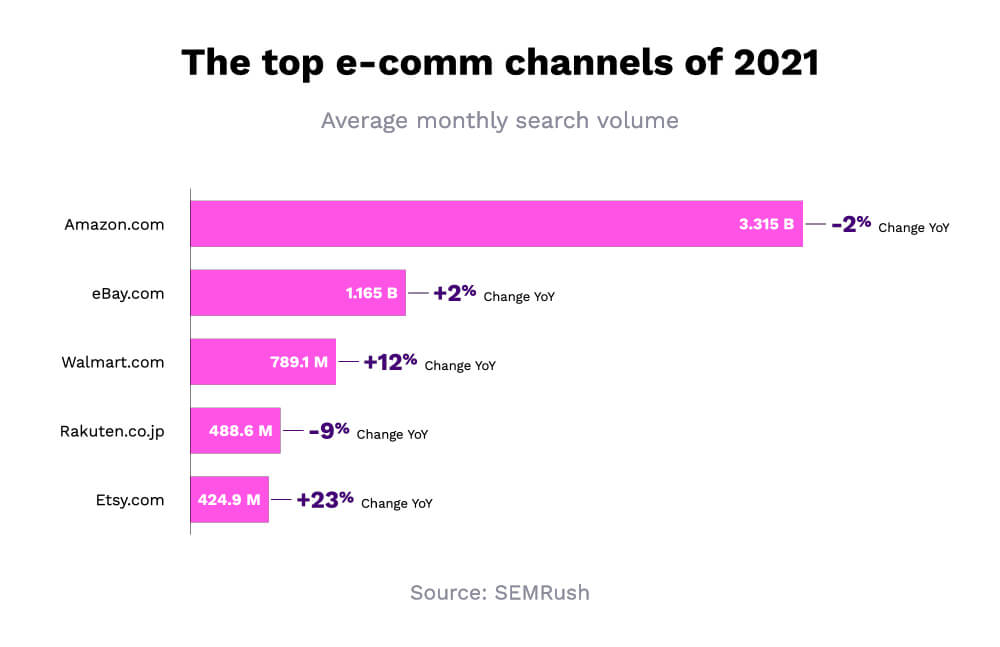This is an excerpt from MarketerHire's weekly newsletter, Raisin Bread. To get a tasty marketing snack in your inbox every week, subscribe here.
These are e-comm’s Big 5, according to Semrush’s year-in-review report, if you rank by average monthly website visits.

It’s an interesting metric. We’d usually rank them by market share, which gives you, according to eMarketer:
- Amazon
- Walmart
- eBay
- Apple
- Home Depot
Combine the two lists, though, and it leads to some interesting marketing insights, like…
Amazon is KING.
However you slice it, Amazon wins e-comm — it has 3X the traffic of its closest competitor, and ~6X the market share.
Amazon reaches people where they shop. And convert.
Marketplaces get more traffic than brand sites.
The most-visited e-commerce sites are marketplaces, which makes sense — every merchants’ self-promotion doubles as platform promotion.
Cross-listing your product on these sites (as long as they have good recommendation algos) can fill your top of funnel.
But Apple’s still got major market share.
Apple is the opposite of a marketplace: It sells a few pillar products for a high price (Airpods Pro: $249?!) and ranks fourth on market share.
Dominating a premium niche — and investing in brand — works!
Our takeaway?
The big three of e-commerce are self-serve marketplaces — and Amazon and Walmart are channels worth a test. (Could this be the year of Walmart Ads?)
But Apple shows you can still be a one-brand e-comm giant.

.webp)